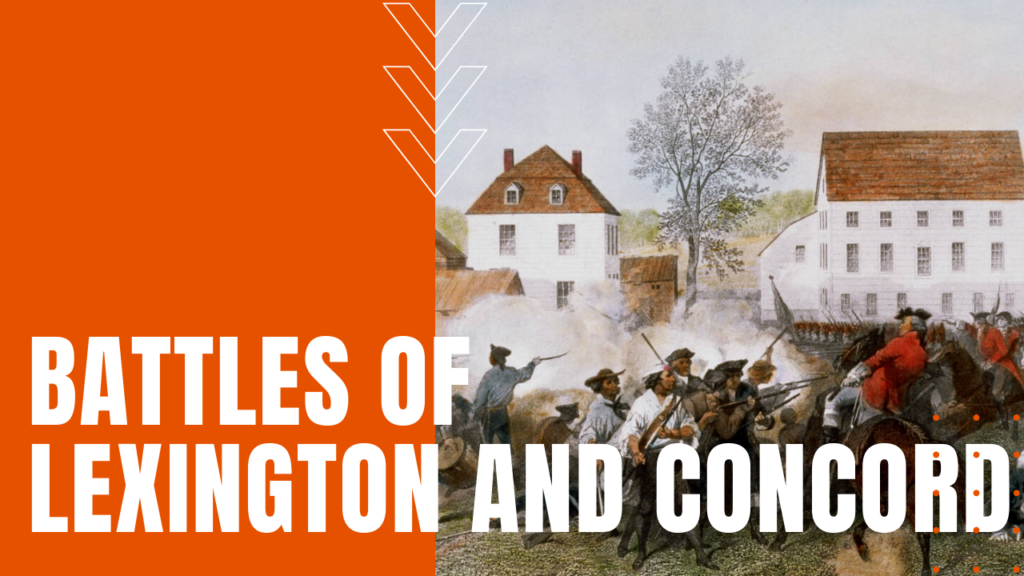The Battles of Lexington and Concord, fought on April 19, 1775, are often heralded as the spark that ignited the American Revolutionary War. However, the historical narrative surrounding these events is layered with myths and misconceptions. This article aims to demystify the popular beliefs surrounding these battles, providing a clearer understanding of their significance in American history.
The Prelude to Conflict

Before delving into the battles themselves, it is crucial to understand the context leading up to April 19, 1775. Tensions between the American colonies and British authorities had been escalating for years, fueled by a series of legislative acts and punitive measures that the colonists perceived as oppressive.
- The Stamp Act (1765): Imposed taxes on printed materials, leading to widespread protests and the formation of the Stamp Act Congress.
- The Townshend Acts (1767): Enacted taxes on common goods such as tea and glass, further exacerbating colonial discontent.
- The Intolerable Acts (1774): A series of punitive measures aimed at Massachusetts, which galvanized colonial unity against British rule.
These events set the stage for open conflict, as colonial militias began to organize and stockpile arms in preparation for possible confrontations with British troops.
The Myth of “The Shot Heard ‘Round the World”

One of the most enduring myths surrounding the battles of Lexington and Concord is the idea of “the shot heard ’round the world.” This phrase, popularized by Ralph Waldo Emerson’s poem “Concord Hymn,” suggests a single, pivotal shot that initiated a global conflict.
In reality, the first shots fired at Lexington were not so much a deliberate act of rebellion as they were a chaotic exchange between colonial militia and British troops. Eyewitness accounts indicate that the situation was fraught with confusion:
- Militia members were uncertain about whether to engage the British troops or disperse.
- The British soldiers were under orders to seize colonial weapons, not to provoke violence.
- The actual phrase “the shot heard ’round the world” was never used until decades later, reflecting the mythologization of the event.
Thus, while the battles were indeed significant in igniting revolutionary fervor, they were not initiated by a singular heroic act but rather by a series of miscommunications and misunderstandings.
The Role of Propaganda
Another layer to the mythology of Lexington and Concord lies in the use of propaganda during and after the battles. The colonists, recognizing the importance of public support, disseminated narratives that framed the British as aggressors and the colonists as noble defenders of liberty.
- Paul Revere’s Ride: Revere’s midnight ride became a legend, but the accuracy of the details surrounding it has been debated. His role was part of a larger network of communications that included other riders.
- Depictions of the Battles: Artwork and pamphlets from the period often exaggerated the heroism of the colonists while demonizing the British troops.
- The Boston Massacre (1770): The events of this earlier incident were utilized to stoke anti-British sentiment and were referenced in the context of Lexington and Concord.
These efforts to frame the narrative not only influenced public opinion at the time but also shaped the way future generations would understand these critical events in American history.
The Actual Battles: A Closer Look
On the morning of April 19, 1775, British troops marched from Boston to Concord with orders to confiscate colonial weapons. The ensuing battles unfolded in a series of confrontations that varied in scale and intensity.
Battle of Lexington

The first encounter occurred at Lexington, where approximately 70 colonial militia stood ready. The British troops, numbering around 700, confronted them. The specifics of this battle are often oversimplified:
- The colonial militia was not prepared for a full-scale battle; many were farmers and tradesmen.
- The confrontation resulted in the death of eight militiamen and one British soldier, showcasing the tragic consequences of the encounter.
Battle of Concord
After the brief skirmish at Lexington, the British continued to Concord, where they faced a more organized resistance. The militia had strengthened their ranks, and the British troops encountered significant opposition:
- At North Bridge in Concord, colonial forces successfully repelled British troops, marking a turning point.
- The British were forced to retreat back to Boston under fire from numerous militia groups, illustrating the growing resolve of the colonists.
The battles were not decided victories for either side but were pivotal in galvanizing colonial resistance and demonstrating the potential for organized military action against British forces.
The Aftermath and Long-Term Impact

The immediate aftermath of Lexington and Concord saw a surge in enlistments for colonial militias and growing support for independence. However, the battles also had profound implications for both sides:
- British Response: The British government dismissed the colonies’ grievances, viewing the events as a minor rebellion that would soon be quelled.
- Colonial Unity: The battles fostered a sense of unity among the colonies, leading to the formation of the Continental Congress and the eventual Declaration of Independence.
In the long term, these battles are credited with shifting public sentiment and fortifying the revolutionary cause, ultimately leading to the establishment of the United States.
Conclusion: The Legacy of Lexington and Concord
The battles of Lexington and Concord were not just isolated incidents but foundational events that shaped the trajectory of the American Revolutionary War. By unpacking the myths surrounding these battles, we gain a clearer understanding of their significance and impact. The stories of heroism, sacrifice, and the struggle for independence are essential to the American narrative, but they must be grounded in historical reality.
While the phrase “the shot heard ’round the world” captures the imagination, it is crucial to recognize the complexities of the events that transpired on that fateful day in April 1775. Understanding these nuances allows us to appreciate the courage of those involved while also acknowledging the broader context of their actions. As we reflect on Lexington and Concord, we honor the spirit of resilience that defined an emerging nation and continue to strive for the ideals of liberty and justice that these battles symbolize.


